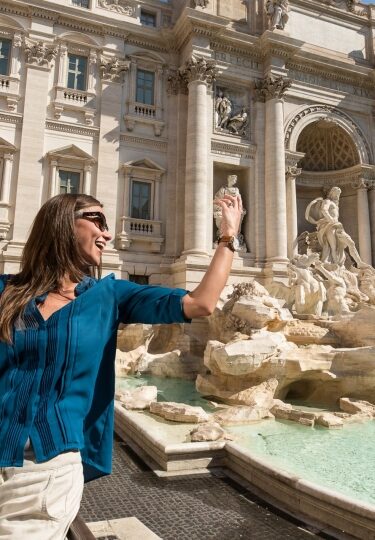Three days in Rome is the ideal amount of time to get acquainted with the headline attractions of the Eternal City.
Founded in the 8th Century BC, Rome’s famous seven hills have naturally seen a lot of modernizing since the time of centurions and caesars. Nevertheless, you’ll discover that what makes this one of the most beautiful cities in Italy is how its past remains such a vital part of modern-day Roman life. It’s also two capitals in one, with Vatican City embedded—literally and figuratively—in the city’s heart.
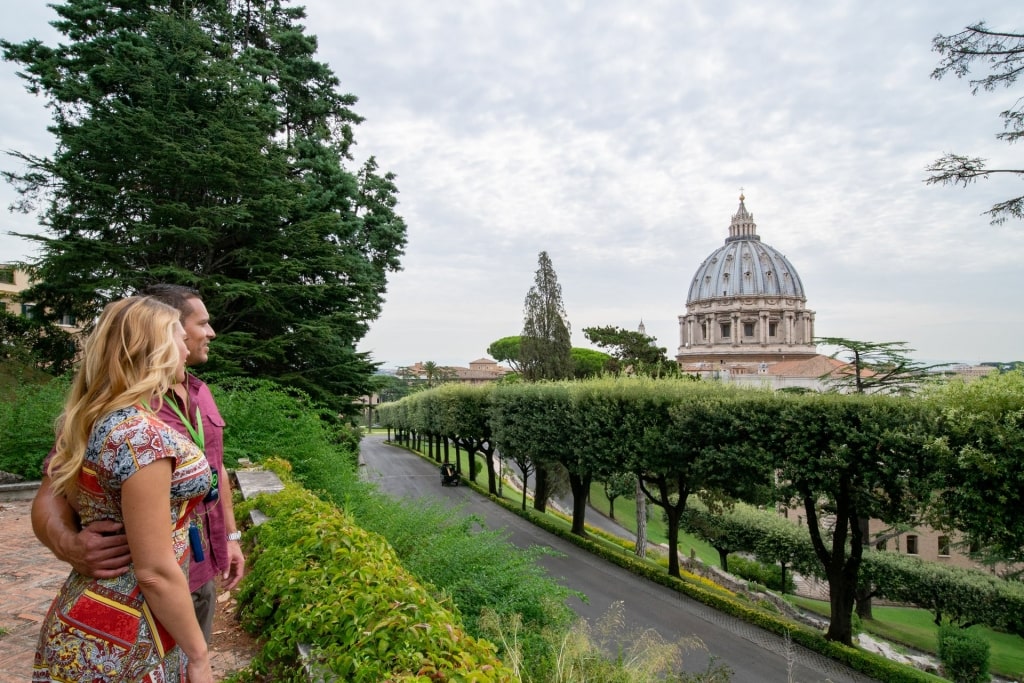
Vatican City
With a three-day itinerary in Rome, you’ll want to focus your efforts on the city center, where you’ll find the majority of the city’s most significant Ancient Roman sites. You’ll walk amid epic structures like the Colosseum and the Circus Maximus, and find your way to more modern attractions like the Spanish Steps and the Trevi Fountain.
Of course, you’ll want to stay longer. You’ll be buffeted by the sheer verve of the metropolis, the zip of stylish Vespas navigating cobblestone lanes. And then there’s its quieter side: the bewitching change as dusk settles into the shapely canopies of Rome’s umbrella pines, watching as a cloud reveals itself as a murmuration of starlings.
No wonder there’s so much history—no one ever wants to leave.
Friday
4 p.m.: Make a Promise at the Trevi Fountain
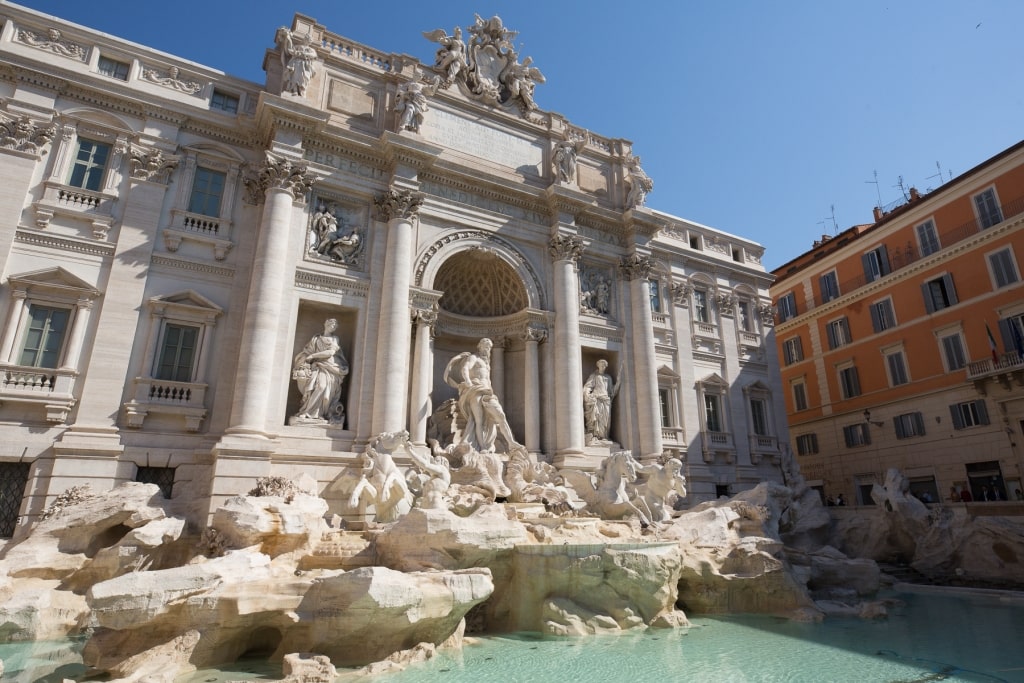
Trevi Fountain
Begin with a baptism. This baroque symbol of Rome, made doubly famous by its association with Federico Fellini’s masterpiece ‘La Dolce Vita’, ties together much of what makes Rome ‘Rome’: the touristic thrum, the glamor’s epic scale, the irrefutable magnificence. It’s a well-worn tradition for visitors to Rome to toss in a coin, thus ensuring their return.
Our recommendation? Toss in a coin at the start—you’ll be planning your next visit before your three days in Rome are up.
5 p.m.: Be surrounded by history at the Roman Forum
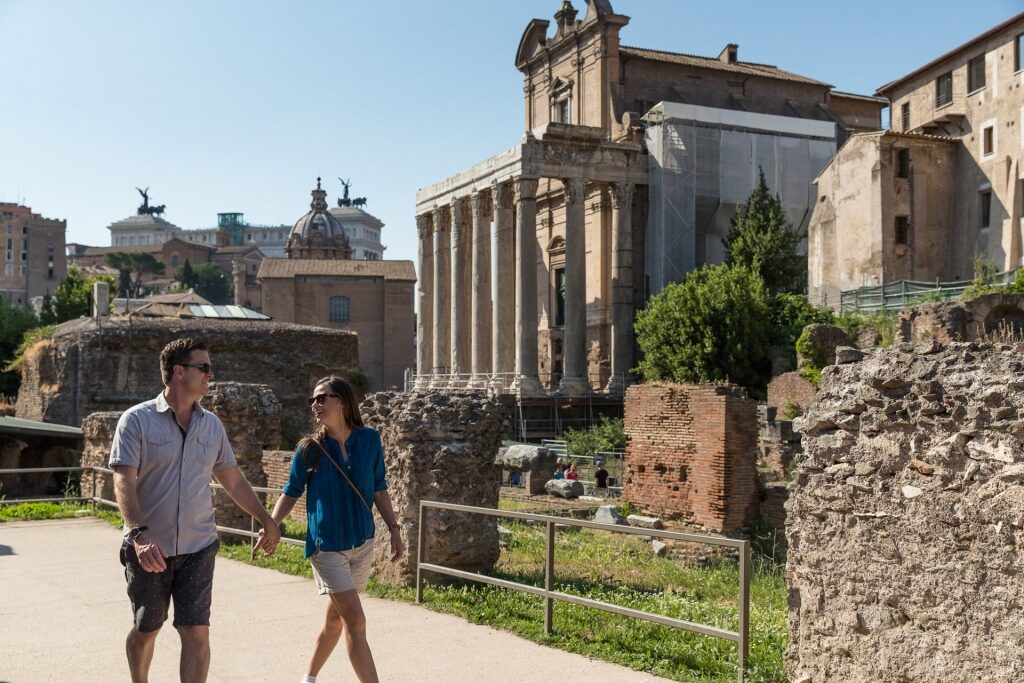
Roman Forum
There’s nowhere quite like the Roman Forum, one of the most popular landmarks in Rome. Its stately pillars, triumphal arches, and ruined temples exude a sense of time in suspension, offering a space of deep reflection amid the razzle-dazzle of modern-day Rome. It’s little wonder this otherworldly site has long been a place of inspiration for artists.
In existence since the misty origins of the city, the Forum—always a place of trade and political activity—slowly accrued significance until it was the seat of power in ancient Rome. That it wasn’t fully excavated until the late 20th century seems almost unbelievable, since it feels eternal and so integral to the city’s modern identity.
Exploring this expansive plaza before the weekend crush gives you a chance to better appreciate the atmosphere of the place, as well as the architecture. A guide is recommended to make the most of the experience—it can feel as if there are as many ruins as there are pennies in the Trevi Fountain.
7 p.m.: Indulge in Golden (Aperitivo) Hour
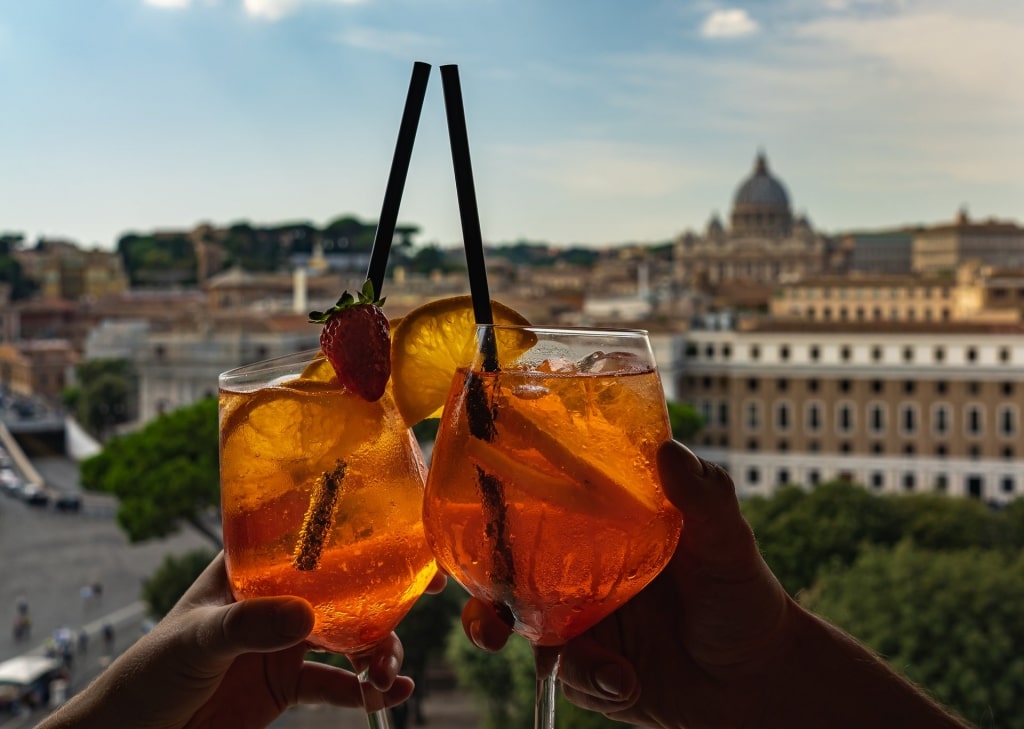
Aperol spritz
The aperitivo is one of those cornerstones of Italian life that, like the passeggiata, induce envy in non-Italians. The preparation for this early-evening ritual is simple: find a bar, typically one with lively exterior seating. Once settled, order an Aperol spritz and nibble the briny olives, crisp grissini, and salty rosemary focaccia as the orange sunset color-matches your drink.
What’s on offer for aperitivo varies from bar to bar, but in a city as dynamic as Rome, it’s difficult to find a bad one. Reward a long afternoon’s culture imbibing by finding your way to Palazzo Montemartini near the central station and ascending to the hotel’s Terrazza Montemartini. This rooftop bar is open to non-guests, and its top-notch finger food, stylish patrons, and wonderful views make for an aperitivo gilded with a touch of luxury.
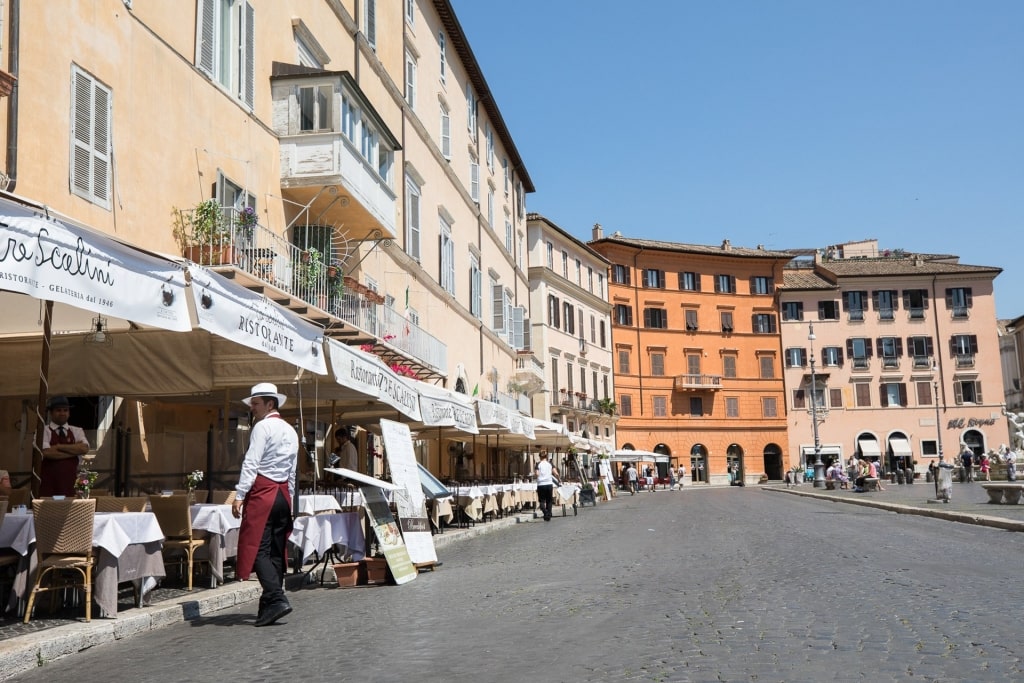
Piazza Navona
Prefer a dose of life at street level? Ai Tre Scalini is a gem of a wine bar stashed beneath cascades of ivy near central Piazza Navona. So near to the city center—and in the hipster Monti district—it’s a remarkably rare island of traditional Roman reserve with a commendable drink selection.
8 p.m.: Taste Roman Flavors
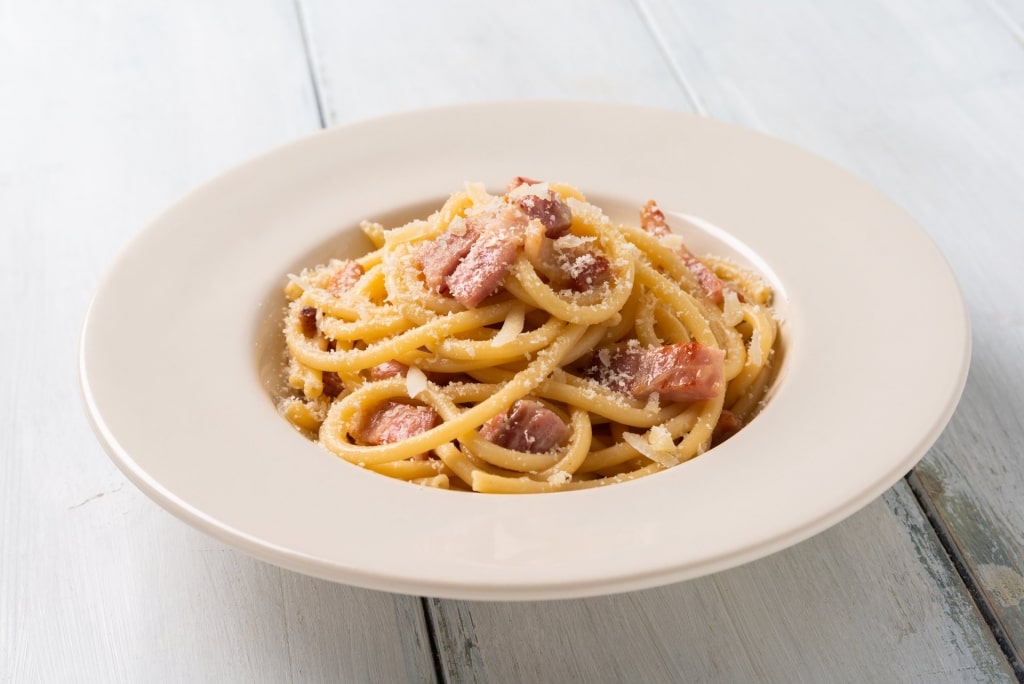
Pasta alla gricia
Travel anywhere in Italy and you’ll soon learn about the distinctive local cuisine (which is always superior to the specialties one village over). Rome is no different. Of its litany of fine culinary concoctions, find time for emblematic pasta dishes such as cacio e pepe and pasta alla gricia (both featuring the local sheep’s cheese: sharp and salty pecorino romano). You could also play it safe with the more well-known dish, spaghetti alla carbonara.
To find primo examples, stroll over the luminous Ponto Sisto bridge and into the Trastevere neighborhood. A nightlife favorite for the Roman populace, this medieval neighbourhood is removed enough from the crowds but never dead, making it an excellent choice to explore Rome off the beaten path. Best of all, its local trattorias are feted for their traditional cuisine.
Find a cobbled street-side table at Trattoria Da Lucia for culinary classics artfully executed. If you’re fixated on your first pizza, find Ivo a Trastevere for its crisp pies created in prototypical Roman style.
Saturday
8:30 a.m.: Visit the Colosseum
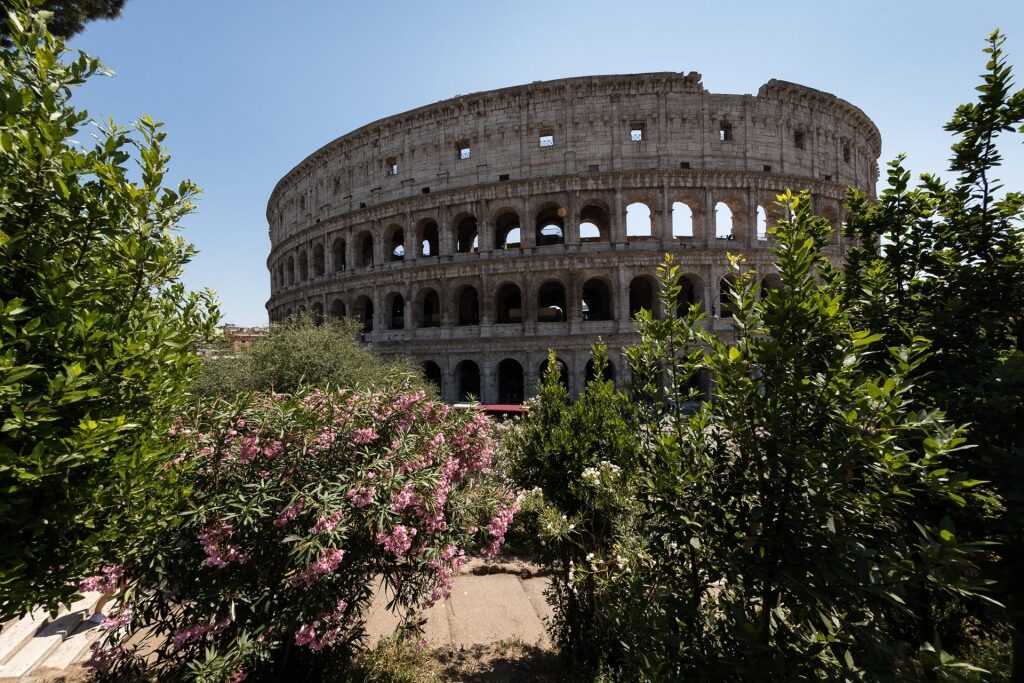
Colosseum
For many, the Colosseum is the most exciting prospect amid Rome’s dense thicket of heritage sites. It’s an experience that’s as vivid as visiting the preserved remains of Pompeii. In its heyday, its tiered stone seats held up to 80,000 ancient Romans enthusiastic for blood-tinged spectacle.
Arriving early helps to beat the crowds and the heat of Italy in the summer. A visit to the Colosseum—even if you have seen Ridley Scott’s ‘Gladiator’—is most satisfying with a tour guide. An experienced one can bring the amphitheater to life, from its subterranean hypogeum to the arena floor, a portion of which has been rebuilt for visitors.
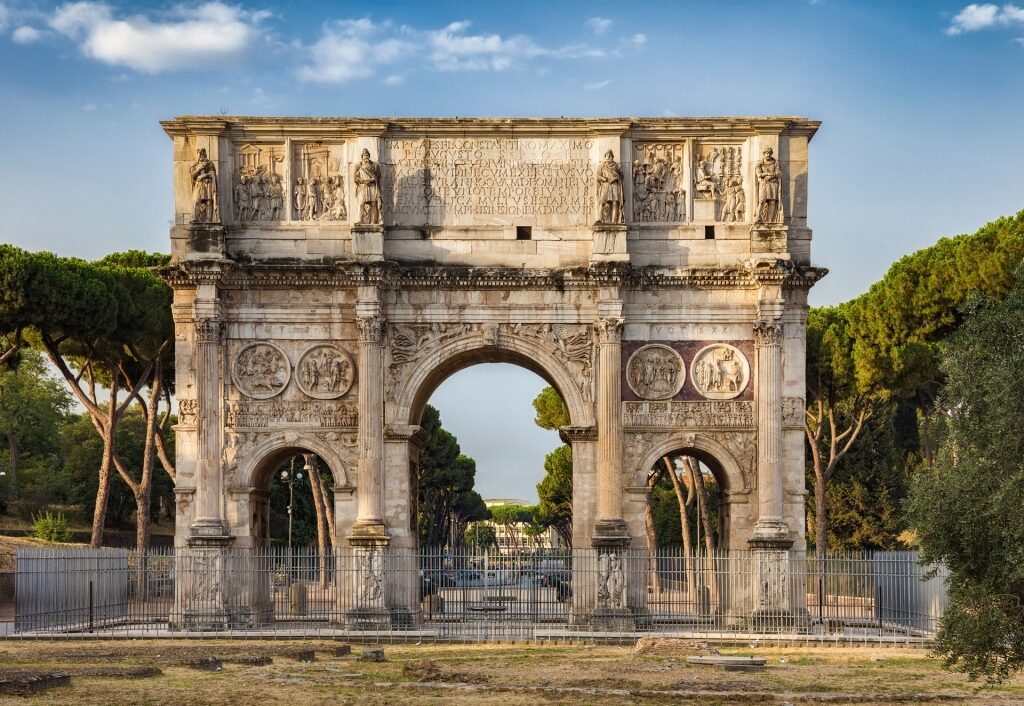
Arch of Constantine
When you emerge from the Colosseum, be sure to see the nearby Arch of Constantine as well. One of the best-preserved of the ancient Roman structures, this imposing triumphal arch celebrates Emperor Constantine’s victory over Maxentius in AD 312.
11 a.m.: Stroll the City
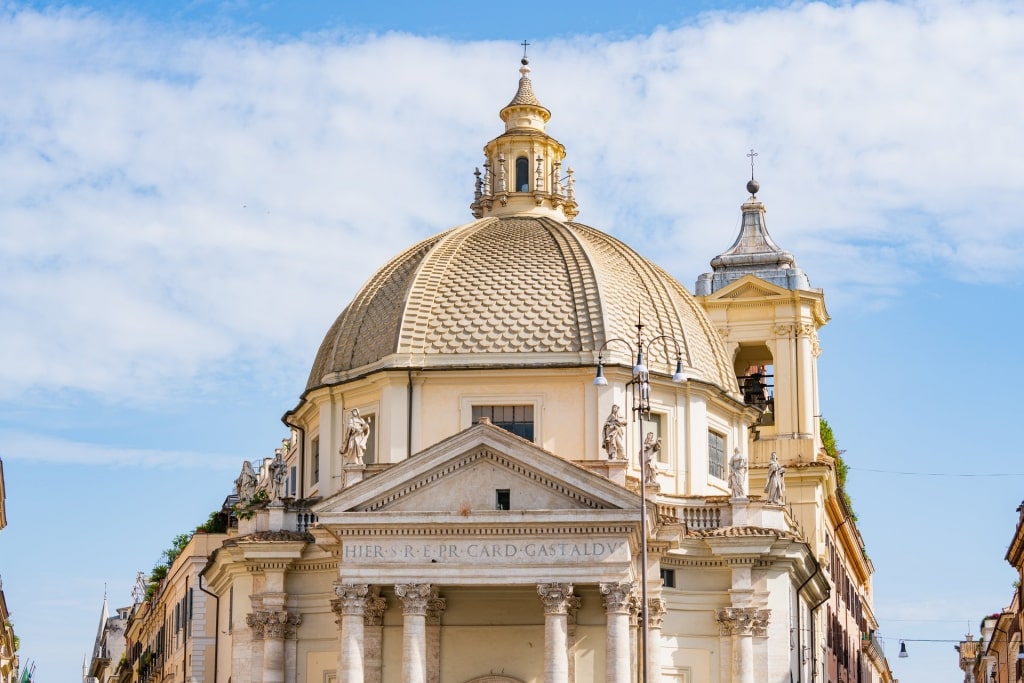
Piazza del Popolo
From the Colosseum, it’s a half-hour as the Vespa weaves to reach Piazza del Popolo or ‘People’s Square’. The direct route brings you near numerous wonderful sights, but as you’re already on day two of your three days in Rome, it’s important to be choosy.
Unquestionably worth a detour is the brooding Pantheon. Built before the turn of the first millennium AD, the Pantheon is not only a striking fusion of ancient Greek and Roman architecture, but the first Roman temple constructed for common citizens to worship in.
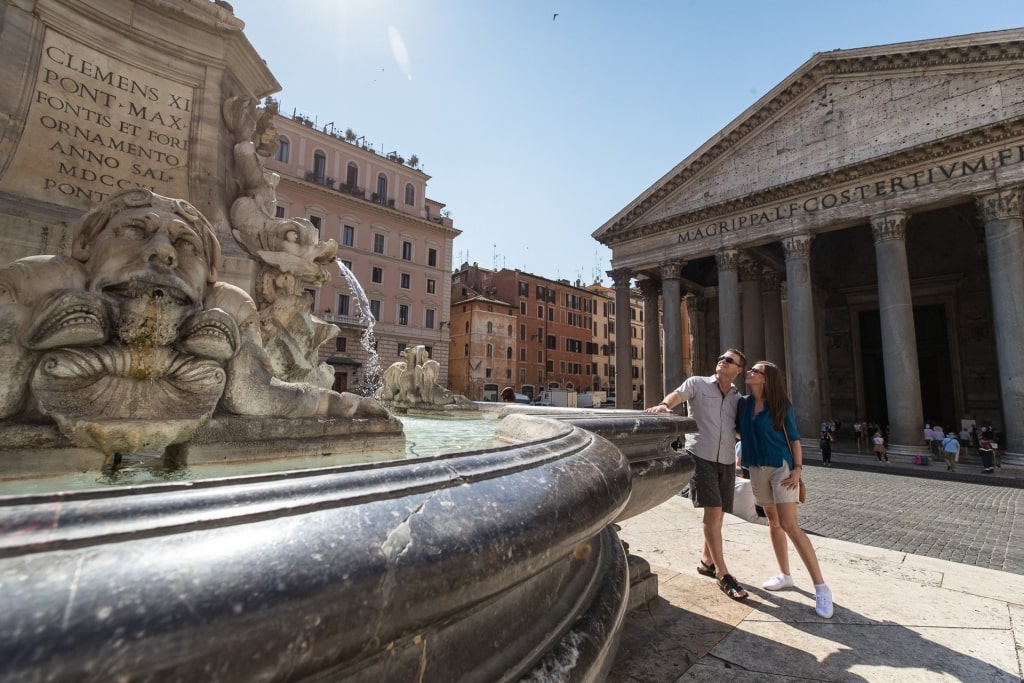
Pantheon
According to Roman legend, the Pantheon also marked the spot where Romulus, at his death, was seized by an eagle and carried off to the afterlife.
The building’s innate profundity, both in form and function, is diluted in the evenings when teenagers gather to romance amid the stout granite columns.
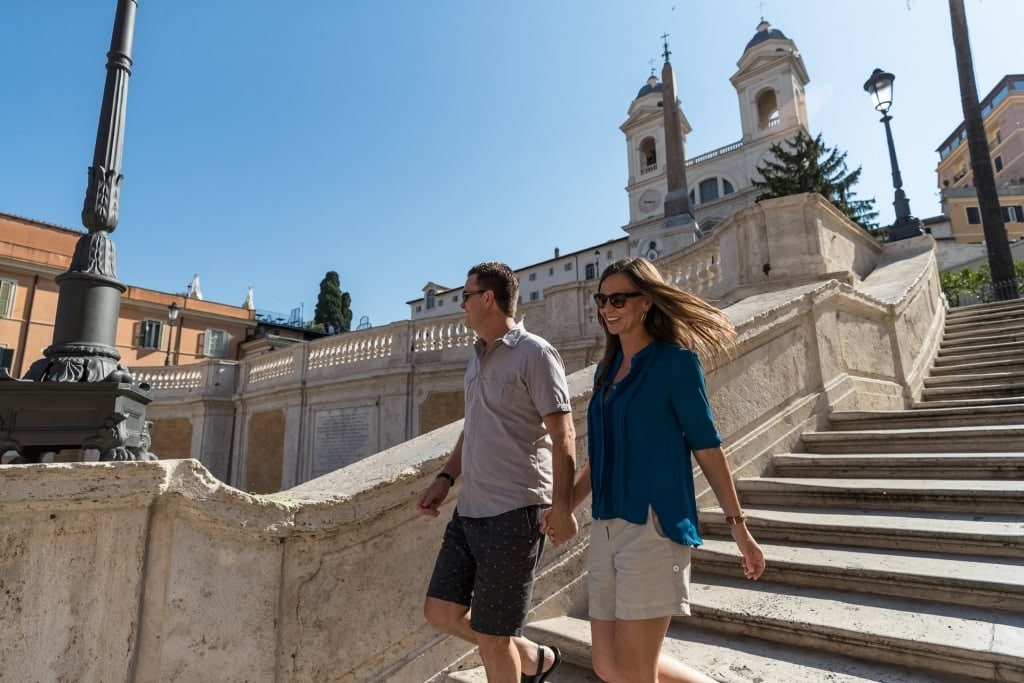
Spanish Steps
Another essential stop on a three-day itinerary in Rome is to the Spanish Steps, a uniquely elegant cascade in the city. Built between 1723 and 1725, the broad steps flow down from the twin alabaster bell-towers of Trinità dei Monti church at the top towards the opalescent, burbling Fontana della Barcaccia in the Spanish Square below. Decent views of St. Peter’s Dome are available from the steps, but the landmark primarily makes for an excellent selfie stop.
Continue on, walking northwest from the steps and skirting the edge of Villa Borghese Gardens, and you’ll soon arrive at Piazza del Popolo. Encircled by cultural and architectural points of interest, the graceful square’s focal point is an Egyptian obelisk, a spoil of war dating back to 10 BC. After you’ve spent time enjoying this pedestrianized zone’s peaceful expanse, decamp to Gelateria dei Gracchi on Via di Ripetta for a well-deserved gelato.
12 p.m.: Sample Street Food
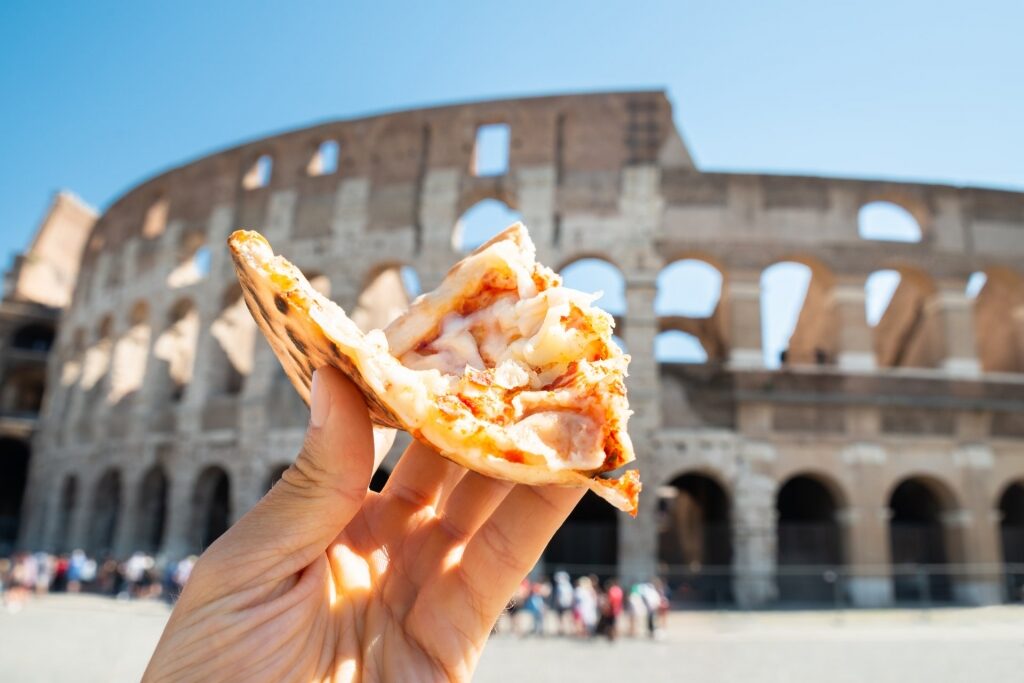
Street food pizza
Roman street food is more than just pizza by the slice (pizza al taglio)—although such is the variety of pizza on offer that you could happily indulge for all three days in Rome with little chance of repetition.
Read: What to Eat in Rome
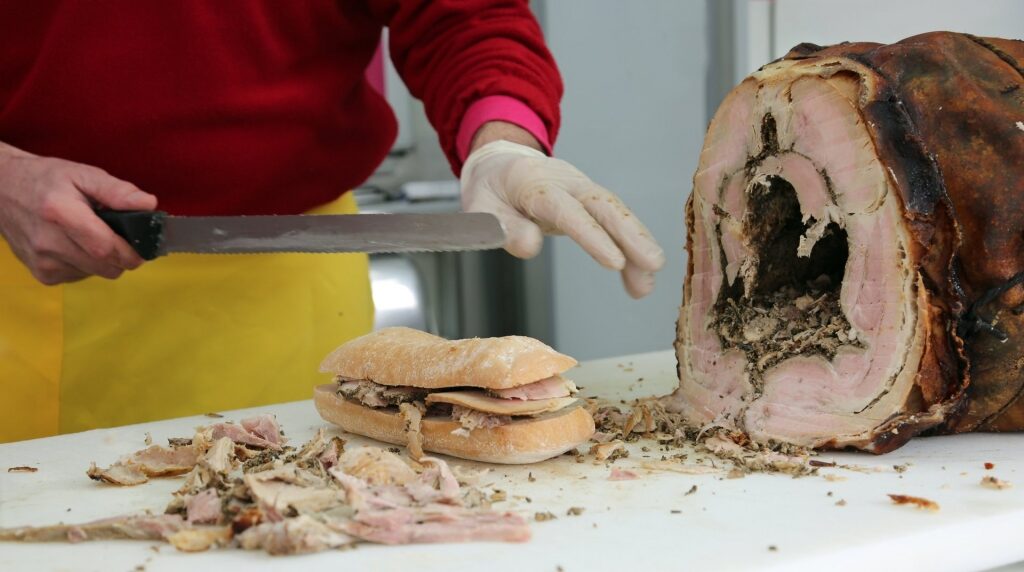
Porchetta
But you’d be missing out. One citywide favorite you’ll frequently happen across is porchetta. These juicy chunks of slow-roasted pork are seasoned with salt and rosemary before being served up as a sandwich. The bread used varies, but try to find porchetta served between slices of crisp pizza bianca for the real deal.
Newer is the Trapizzino—the word a portmanteau of tramezzino (“sandwich”) and pizza. This hybrid take-away is a cone of baked pizza dough stuffed with mouth-watering fillings that include eggplant parmesan, braised tripe, or burrata with anchovies. There’s also a dessert version of the trapizzino—vanilla sponge cake foaming over with chocolate-laced whipped cream.
1:30 p.m.: Head to Vatican City
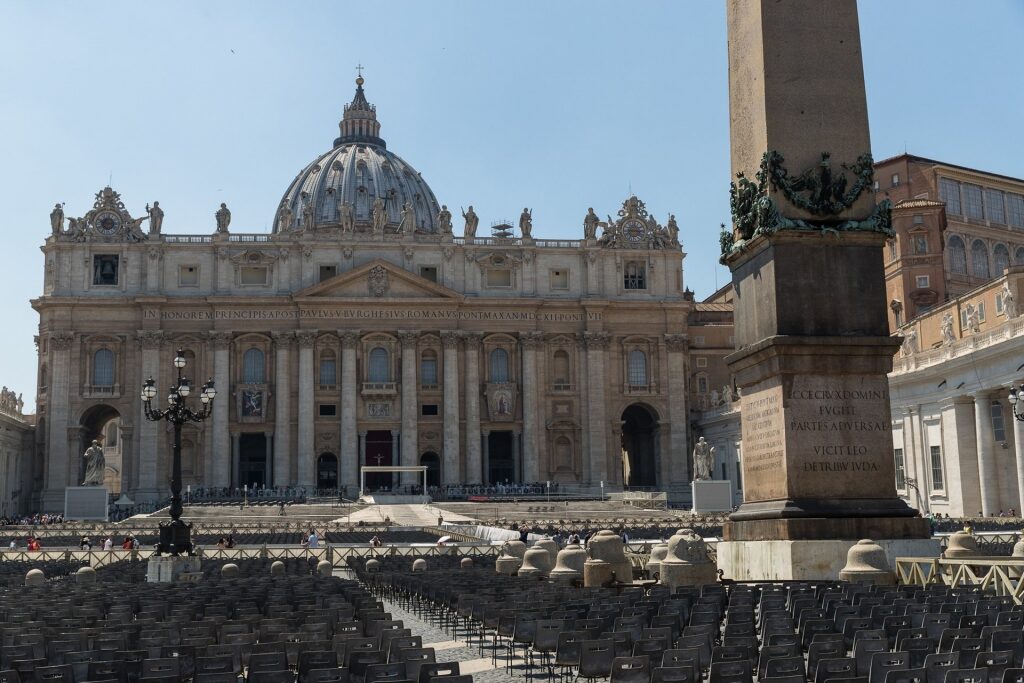
Vatican City
As Rome’s most popular tourist site, Vatican City is extremely well attended seven days a week by international visitors and Catholic pilgrims. However, once you’re admitted into the Catholic city-state, what treasures await.
Vatican City is a city within a city, and home to some of the best museums in Rome. As such, with only three days in Rome, joining a queue-skipping guided tour is essential.
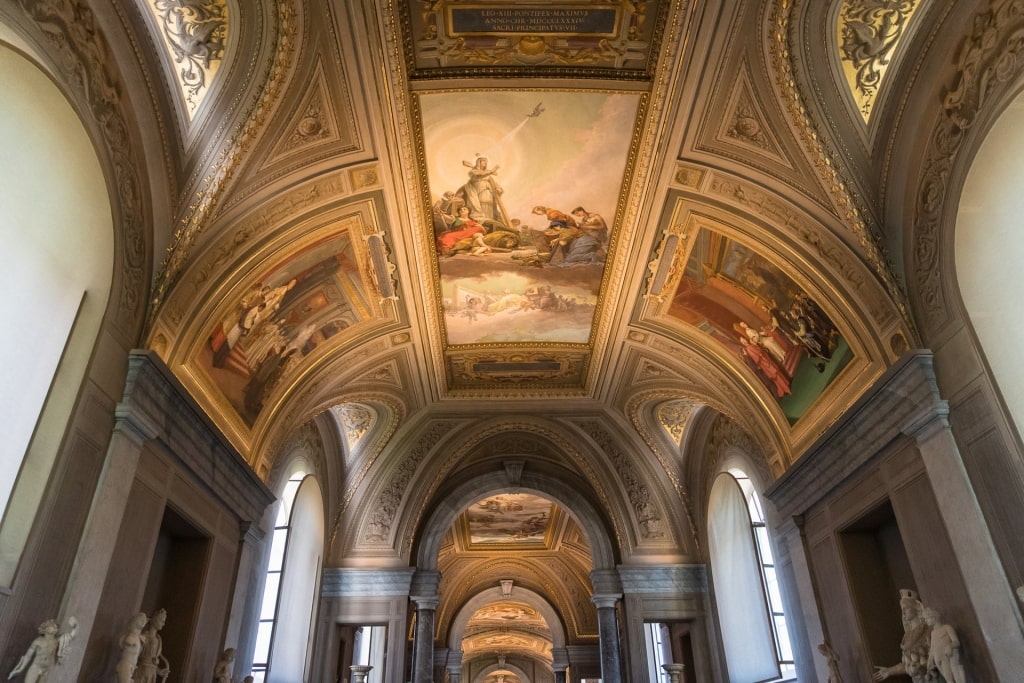
Sistine Chapel
Your guide will show you the highlights of the Vatican Museums (which contain the Sistine Chapel) and Saint Peter’s Basilica, one of the most famed churches in Rome. The museums house an immense selection of artistic treasures, with Michaelangelo’s frescos in the Sistine Chapel a must-see among an ocean of must-sees. The basilica is equally awe-inspiring with Michelangelo’s “Pietà” and Bernini’s pulpit serving as memorable highlights.
6 p.m.: Explore Testaccio
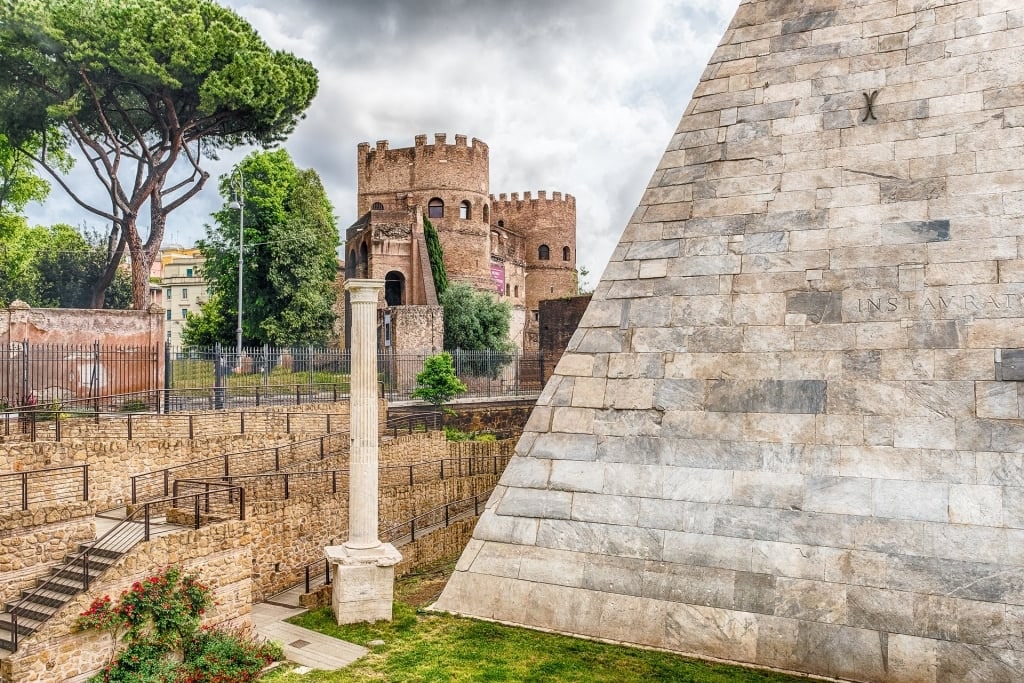
Testaccio
Like Trastevere, central Testaccio offers the wandering gourmand the opportunity for a fabulous food odyssey.
Historically a working-class neighborhood in Rome, and a trade hub in Roman times, this Tiber-side neighborhood was designed as a grid of houses to supply manpower for the central slaughterhouse. As gentrification has overtaken this idiosyncratic district, the slaughterhouse has been repurposed as a site for concerts and art exhibitions. Its split identity makes it an intriguing stop during a three-day itinerary in Rome.
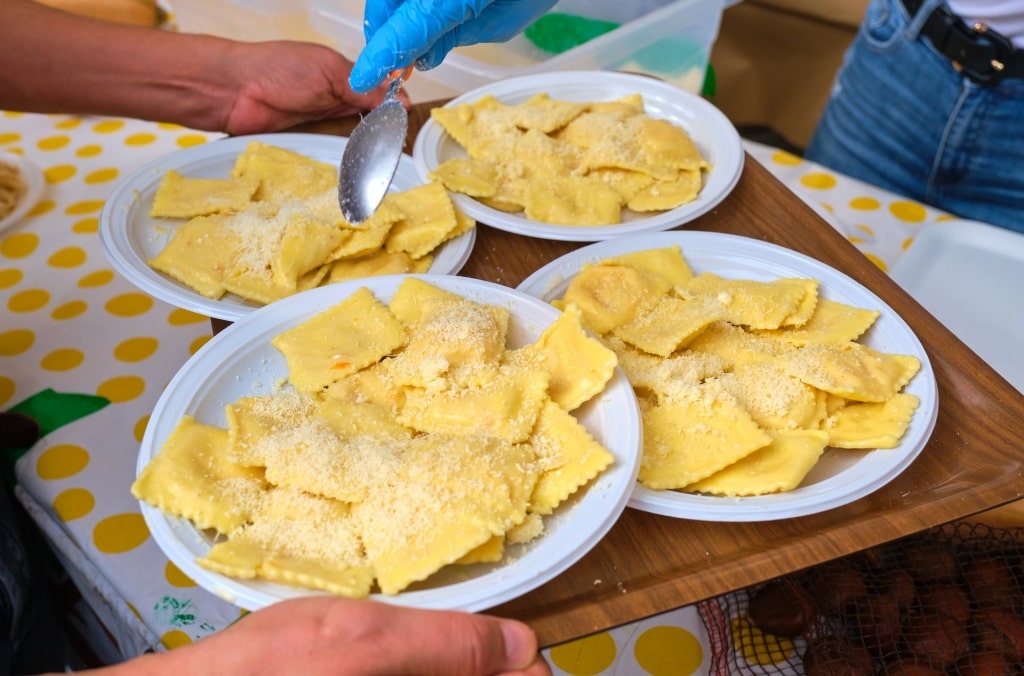
Freshly-made ravioli in Testaccio
Despite such profound changes, this insular chunk of the city has managed to retain its identity, no more so than when it comes to its offal-based cuisine. Similar to Tuscan cuisine, like Florence’s famed panino lampredotto, Testaccio’s food was born out of working-class hardship before being slowly refined into delicacies.
Book a table at local’s favorite Checchino Dal 1887 for a menu of Testaccio greatest hits, think unusual dishes such as macaroni tossed with pecorino, tomato, and lamb intestines. For something a little less adventurous—but no less Testaccini—settle in at Felice a Testaccio for its best-in-class cacio e pepe.
Rather just pick something up to take home at the end of your three days in Rome? The deli Salumeria Volpetti has you covered. For 40 years, it’s provided the city’s inhabitants with superlative pecorino and salami.
Sunday
9:30 a.m.: Head to Castel Sant’ Angelo
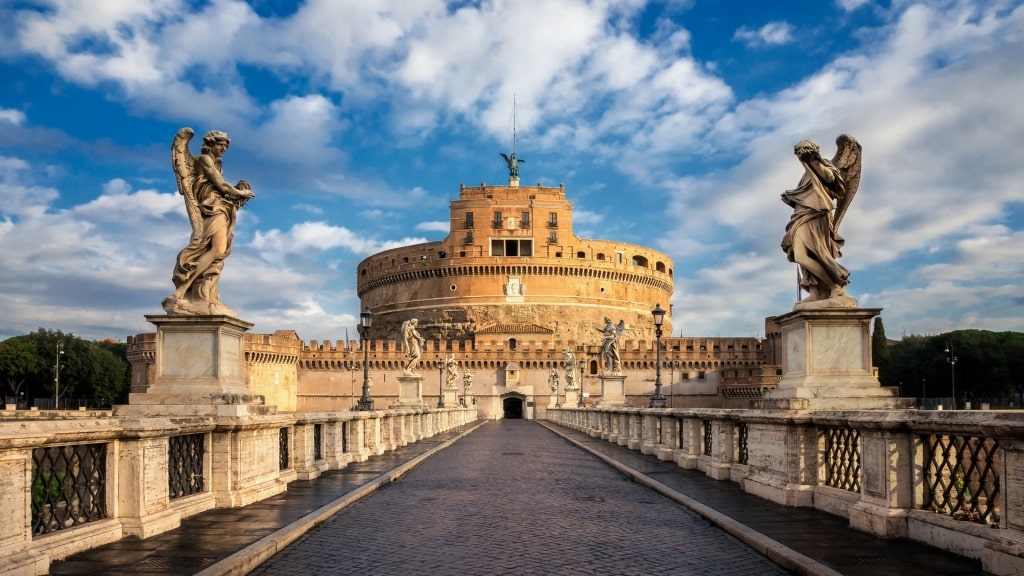
Castel Sant’ Angelo
With an espresso and cornetto (the Italian croissant) in your stomach, make a beeline for the robust Castel Sant’ Angelo. A former papal residence, this impressive Tiber-side fortress-mausoleum was conceived by Emperor Hadrian as a resting place for himself and his family in 135 AD. Three hundred years on, its stout cylindrical shape was absorbed as part of the city’s immense Aurelian Walls that enclosed the seven hills of Rome within a fortified embrace.
As Rome grew, Sant’ Angelo’s role changed with it, becoming a bolthole for popes in danger connected to the Vatican City by a sturdy corridor. Another side of Castel Sant’ Angelo’s history is its role as a feared prison.
A stop for the history-lover’s three-day itinerary in Rome more than the art appreciator, a visit gives you an idea of what a papal panic room looks like, complete with impressive Renaissance-era frescos paneling the plush interior. Make it up its five levels, and you’ll be rewarded with a terrace cafe supplying extraordinary views across the city—not to mention more delicious espresso.
11 a.m.: Fill Up on Sunday Brunch
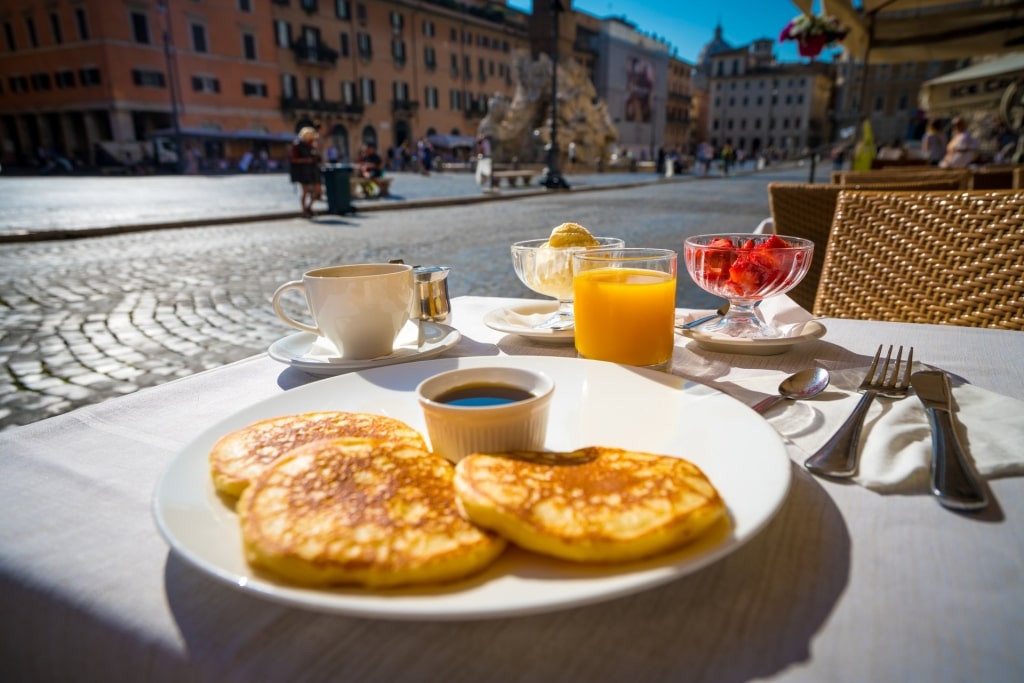
Piazza Navona
There’s no set menu for brunch in Rome—just be sure to bring an appetite.
Book well in advance for La Veranda in Borgo Santa Spirito, a restaurant located in a former papal residence. Here you’ll find English/American flavors in a quintessentially Roman setting. During brunch, this grand beauty is at its buzziest.
Eat a little later (12:30 p.m.) for brunch at Baja. A converted barge, moored near Petro Nenni bridge and a 10-minute walk from Piazza del Popola, its tables are as near to the Tiber as you’ll find in the city.
With the kitchen’s seasonal and fresh agenda, the menu changes every week. Expect a kaleidoscope of both European and distinctly Roman options to fill you up, such as salmon au gratin with swiss chard, or apple and pear strudel laced with cream. Watch the sunlight dance on the water and idly wonder how a three-day itinerary in Rome could be entirely comprised of Sundays.
2 p.m.: Experience the Circus Maximus
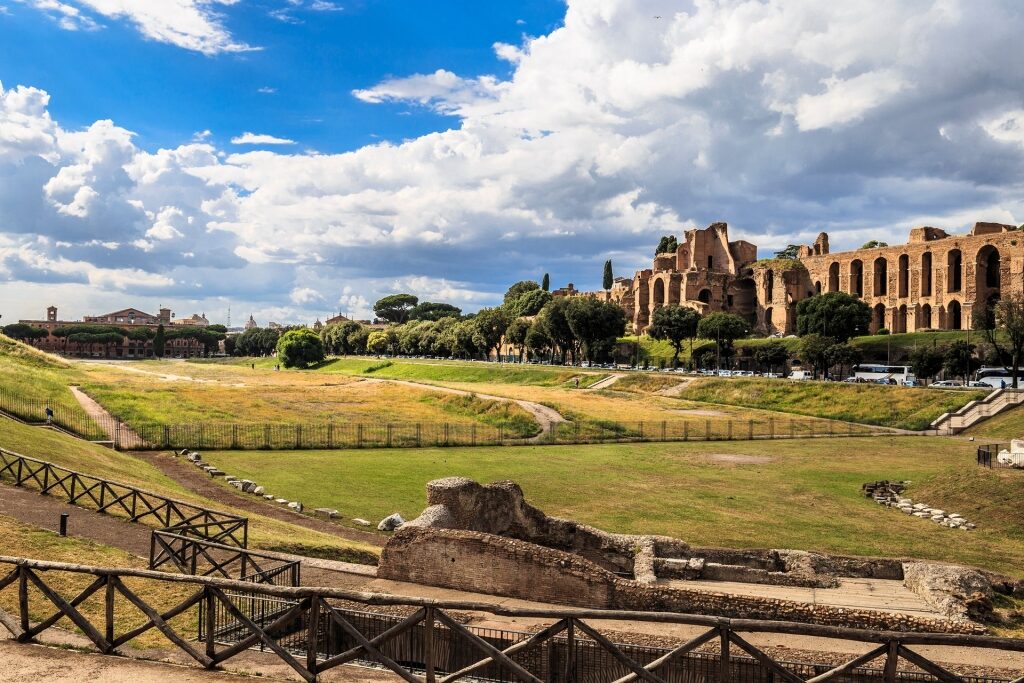
Circus Maximus
At this iconic Roman ruin-turned public park, what surprises most visitors is its size. It’s capable of holding 250,000 citizens—over double that of Michigan Stadium, the largest in the USA. The Romans needed the capacity. As the earliest mass entertainment venue in Ancient Rome’s history, the events here were tied to city-wide religious holidays.
Besides chariot racing, Roman emperors applied their imagination when hosting events at the Circus. Emperor Probus famously created a temporary forest through which animals were hunted.
Today, it’s a park and event venue where you can see and feel the history all around you, despite the prosaic presence of joggers, sun-worshippers, and the sparrows flocking in the trees. To be truly immersed, join a 40-minute walking tour, which uses virtual and augmented reality to recreate what the Circus would have looked like in its heyday. Alternatively, just use the park as a place to unwind near the end of your exciting three-day itinerary in Rome.
Read: Best Day Trips From Rome
3 p.m.: Walk to Palatine Hill
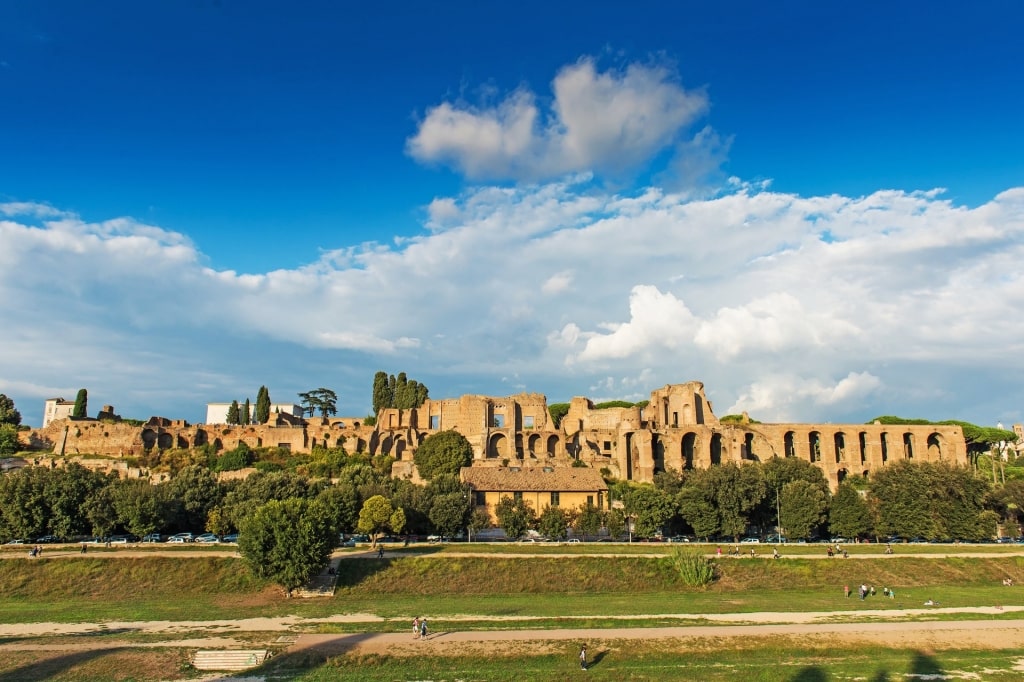
Palatine Hill
A short walk from the Circus Maximus, the Palatine Hill makes for a stunning backdrop to the ancient arena.
The final piece of your journey through Rome’s staggering history, the Palatine Hill is geographically the most central of the city’s famous seven hills. It was revered as the location of the cave where the founders of Rome, Romulus and Remus, were discovered by a she-wolf.
With such mythical cachet, it’s little wonder that the Palatine Hill grew into Ancient Rome’s most exclusive neighborhood. It was the home of emperors and the powerful, rising above the dirt and churn of street-level Rome.
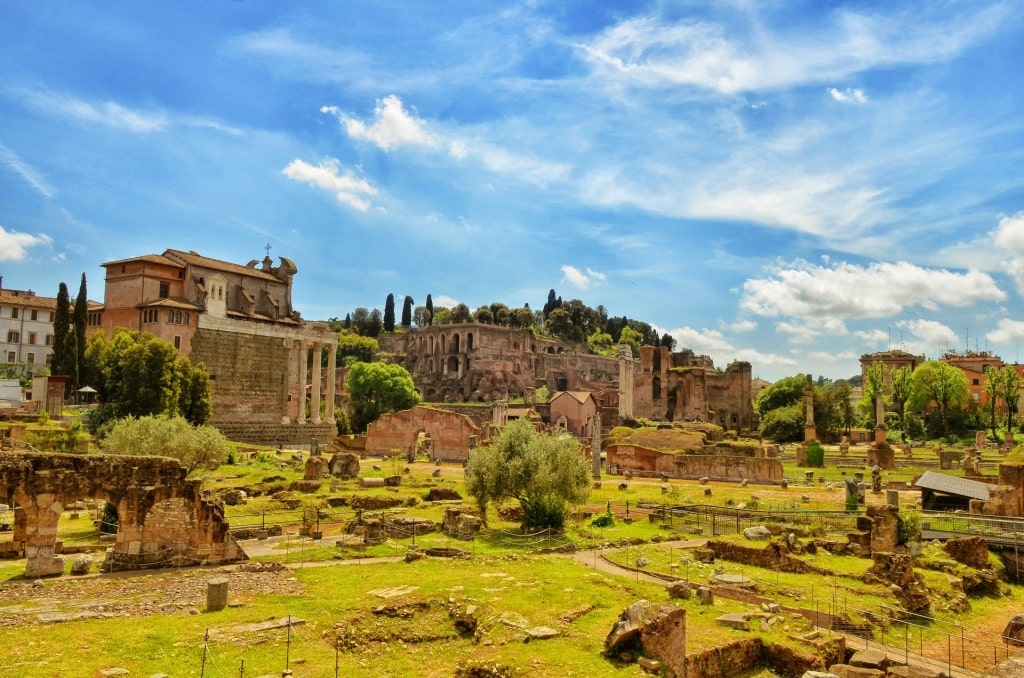
Palatine Hill
Today, as an open-air archaeological dig and museum, it makes for a tranquil spot open to all plebeians. A guided tour brings it to life, taking in the remains of the Iron Age hut identified as the “Hut of Romulus” or the stately Flavian Palace.
It’s not all unmarked ruins. The Palatine Museum offers a much-needed background to the unguided visitor on the significance of certain aspects. Once you’re done with the past, simply walk amid the wildflowers and enjoy the hill’s splendid views of present-day Rome and the atmospheric Roman Forum. Looking back at the forum as your three days in Rome conclude, you’ll realize that your promise at the Trevi Fountain was a sure bet.
Read: Rome for Families: Best Things to Do with Kids
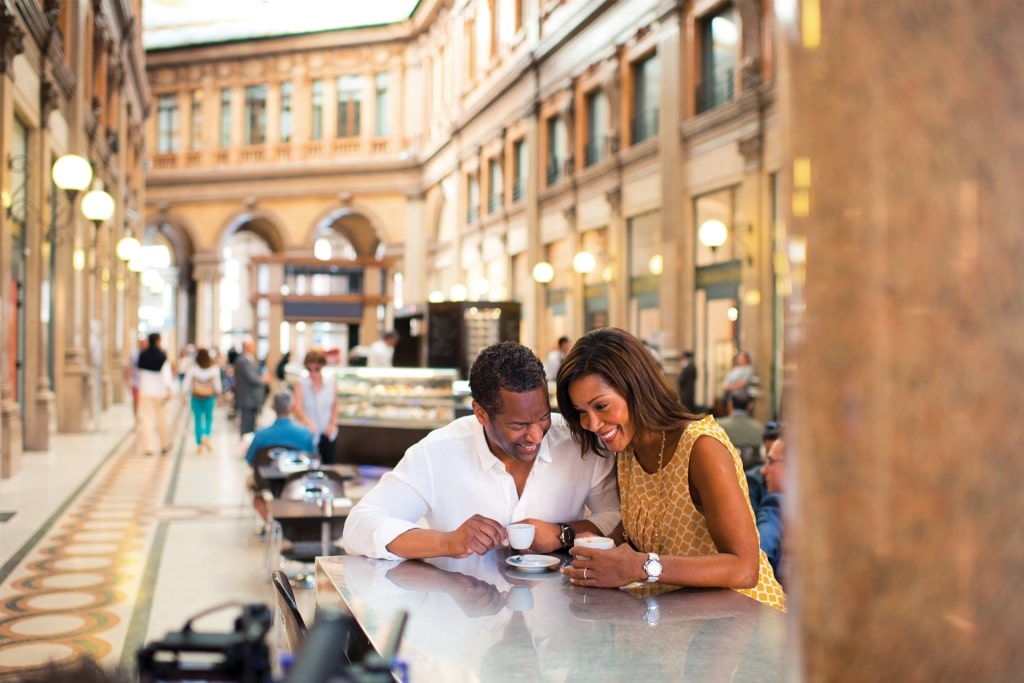
Rome
Explore Rome’s peerless art, historical, and cultural heritage—not to mention its gelatos—on a cruise to Italy. Browse our cruise itineraries online and book a cruise vacation to this stunning country today.
